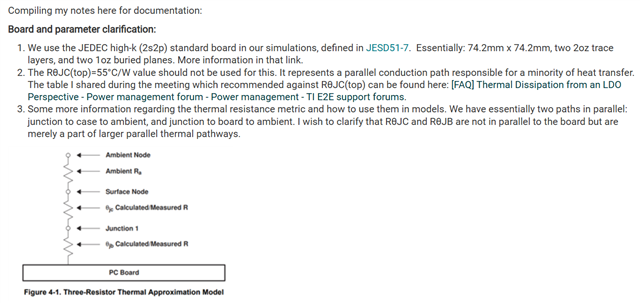Other Parts Discussed in Thread: TLV755EVM-087
Tool/software:
Hi TI Team,
I’m currently using the TLV755P in the DYD package for a 5V to 3.3V regulation application, with a load current of 400mA. As part of the design process, I’m performing thermal calculations for the LDO.
In the datasheet, I noticed two different values for RθJA:
- EVM-based: 60.3°C/W
- JEDEC standard: 92.5°C/W
Additionally, the datasheet specifies:
- Absolute maximum junction temperature: –40°C to 150°C
- Recommended operating junction temperature: –40°C to 125°C
Could you please guide me on which RθJA value is appropriate to use for thermal calculations in a real-world PCB layout?
Your support is greatly appreciated.
Regards,
Loganathan R


